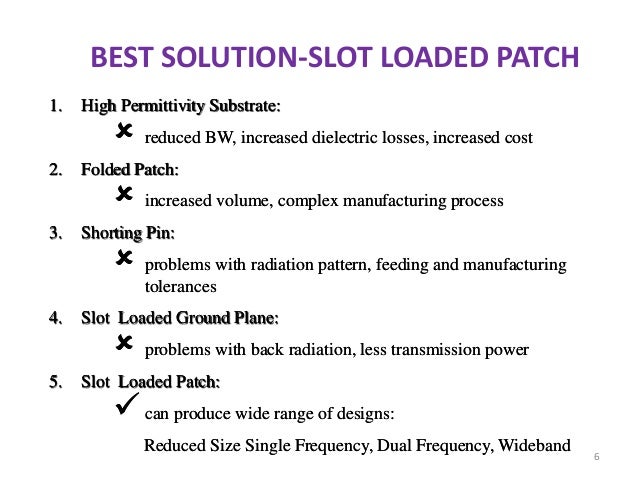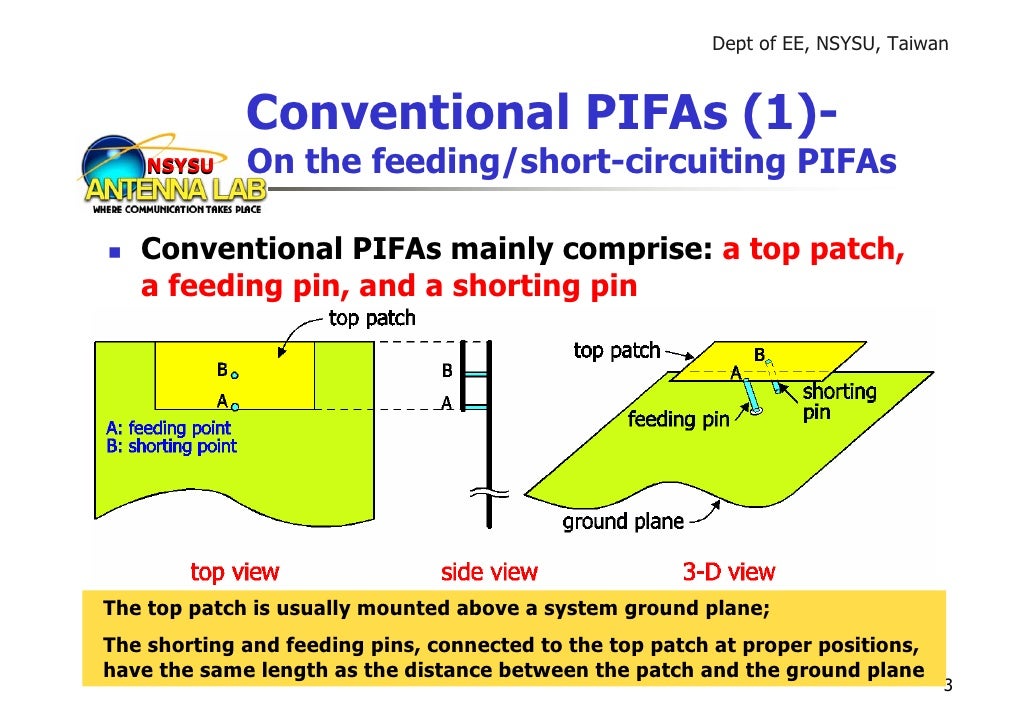Shorting Pin At the Feed to a Patch AntennaA shorting pin can also be used at the feed to a patch antenna, as shown in Figure 2.half-wavelength patch with a shorting pin at the feed pointFigure 2. Half-wavelength patch with shorting pin at the feed.You may be tempted to think that the shorting pin would zero out any power delivered to the antenna. However, because patches are high frequency devices (typically used at 1 GHz), the shorting pin actually introduces a parallel inductance to the antenna impedance. The equivalent circuit of the above antenna is shown in Figure 3.
The antenna impedance is given by ZA, and the shorting pin introduces a reactance equal to jX.equivalent circuit for patch antenna with shorting pinFigure 3. Equivalent Circuit of antenna in Figure 2.The affect of the parallel inductance shifts the resonant frequency of the antenna. In particular, the two components in parallel would result in their admittances (Y=1/Z) adding.
Hence, the admittance of the patch has a 1/(jX) added to it. In this manner, the resonant frequency can be altered.In addition, the shorting pin can become capacitive if instead of extending all the way to the ground plane, it is left floating a small amount above. This introduces another design parameter to optimize performance.Planar Inverted F-Antenna (PIFA)The Planar Inverted-F antenna (PIFA) is increasingly used in the mobile phone market. The antenna is resonant at a quarter-wavelength (thus reducing the required space needed on the phone), and also typically has good SAR properties. This antenna resembles an inverted F, which explains the PIFA name. The Planar Inverted-F Antenna is popular because it has a low profile and an omnidirectional pattern.
The PIFA is shown from a side view in Figure 4. Shorting Pin At the Feed to a Patch AntennaA shorting pin can also be used at the feed to a patch antenna, as shown in Figure 2.half-wavelength patch with a shorting pin at the feed pointFigure 2. Half-wavelength patch with shorting pin at the feed.You may be tempted to think that the shorting pin would zero out any power delivered to the antenna.

However, because patches are high frequency devices (typically used at 1 GHz), the shorting pin actually introduces a parallel inductance to the antenna impedance. The equivalent circuit of the above antenna is shown in Figure 3. The antenna impedance is given by ZA, and the shorting pin introduces a reactance equal to jX.equivalent circuit for patch antenna with shorting pinFigure 3. Equivalent Circuit of antenna in Figure 2.The affect of the parallel inductance shifts the resonant frequency of the antenna.
In particular, the two components in parallel would result in their admittances (Y=1/Z) adding. Hence, the admittance of the patch has a 1/(jX) added to it. In this manner, the resonant frequency can be altered.In addition, the shorting pin can become capacitive if instead of extending all the way to the ground plane, it is left floating a small amount above. This introduces another design parameter to optimize performance.Planar Inverted F-Antenna (PIFA)The Planar Inverted-F antenna (PIFA) is increasingly used in the mobile phone market.

The antenna is resonant at a quarter-wavelength (thus reducing the required space needed on the phone), and also typically has good SAR properties. This antenna resembles an inverted F, which explains the PIFA name. The Planar Inverted-F Antenna is popular because it has a low profile and an omnidirectional pattern.

Shorting Pin Patch Antenna Box
The PIFA is shown from a side view in Figure 4.